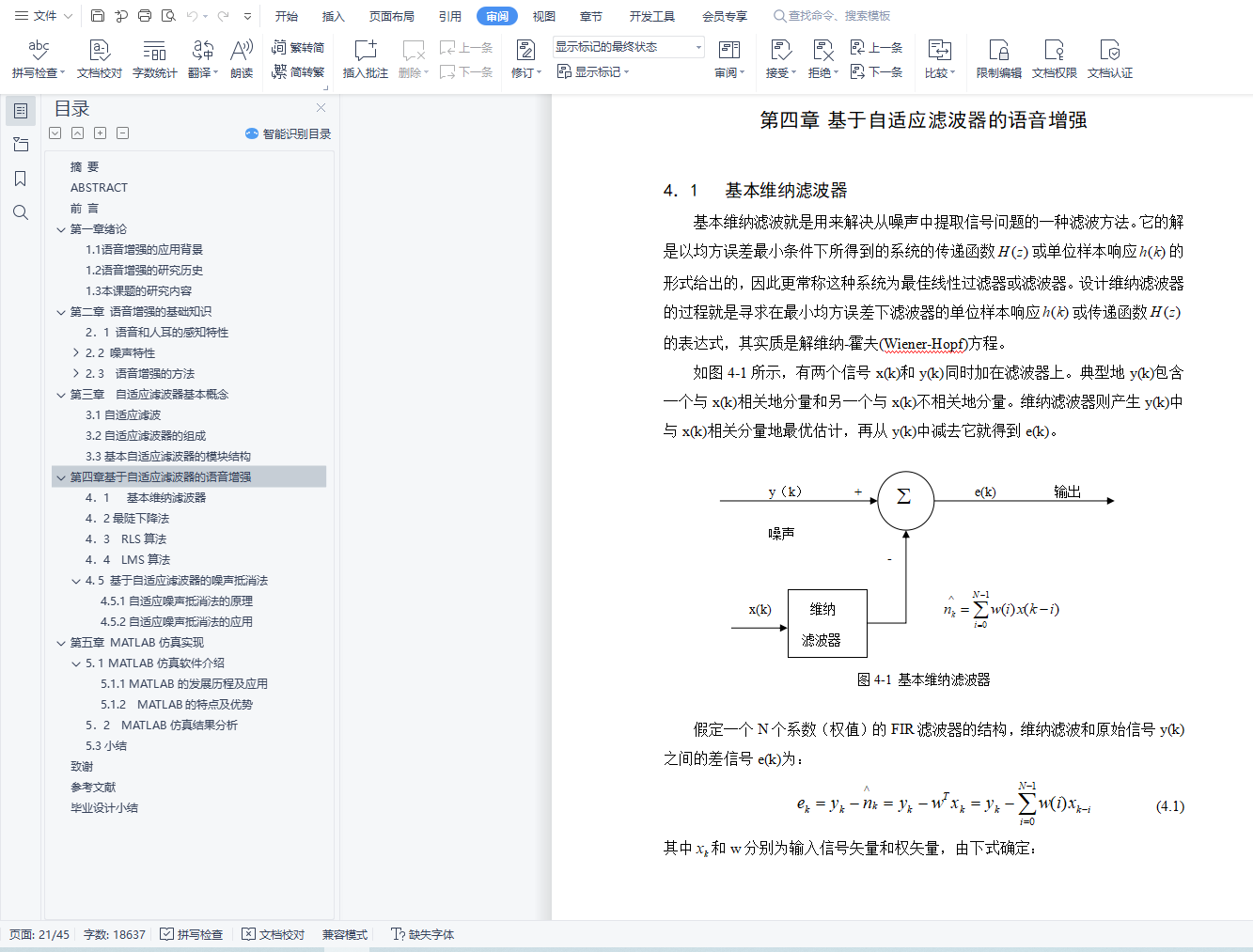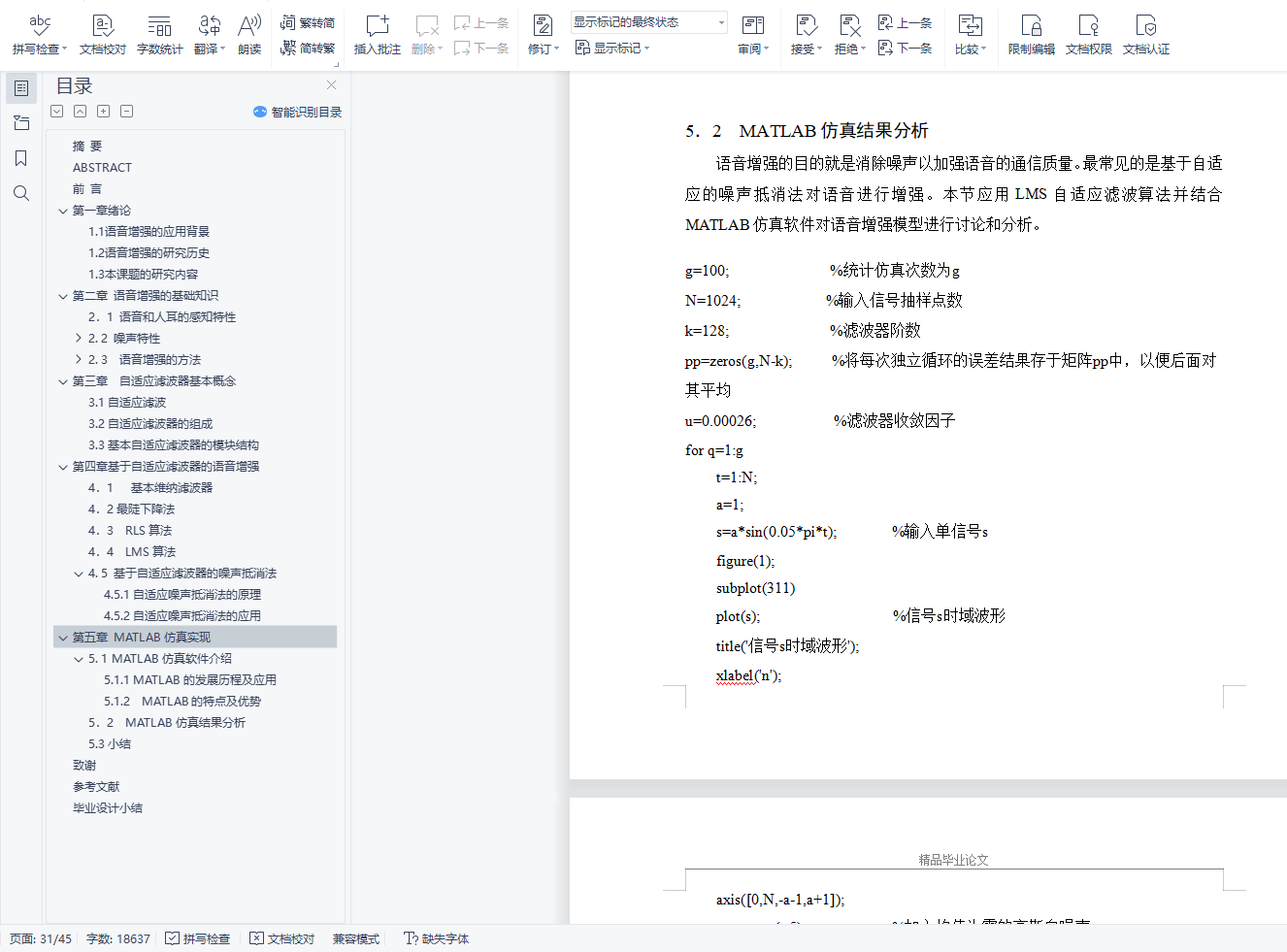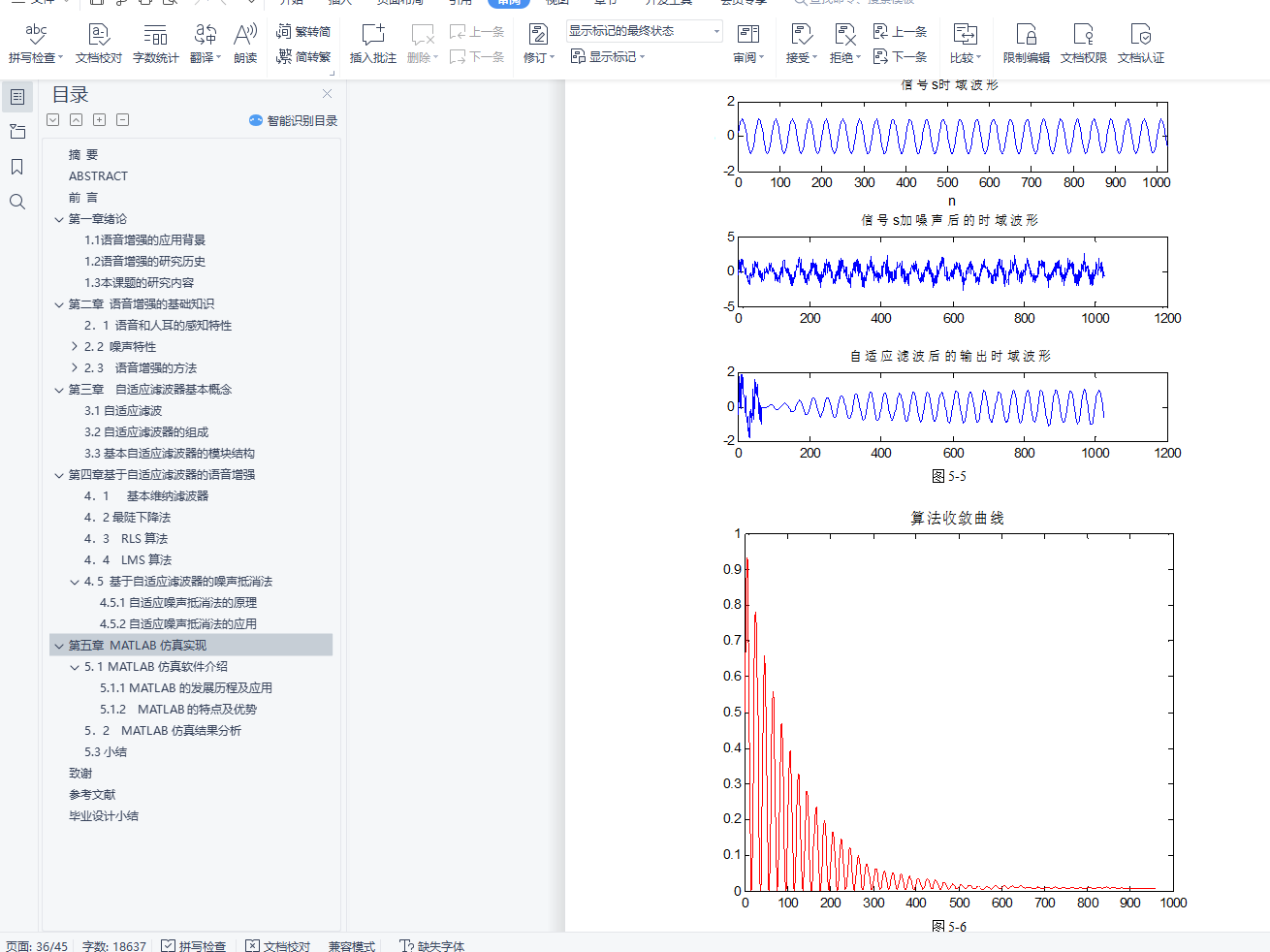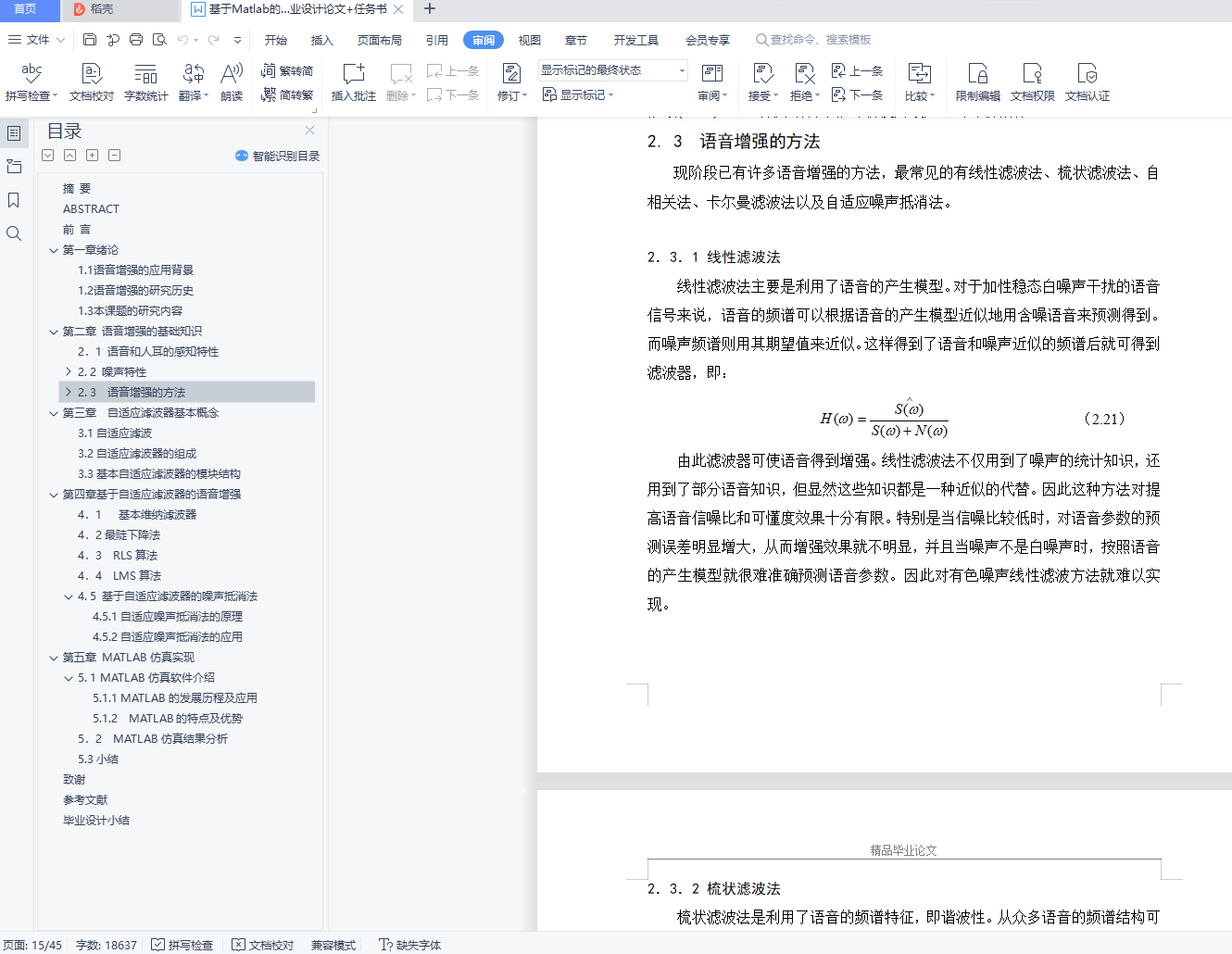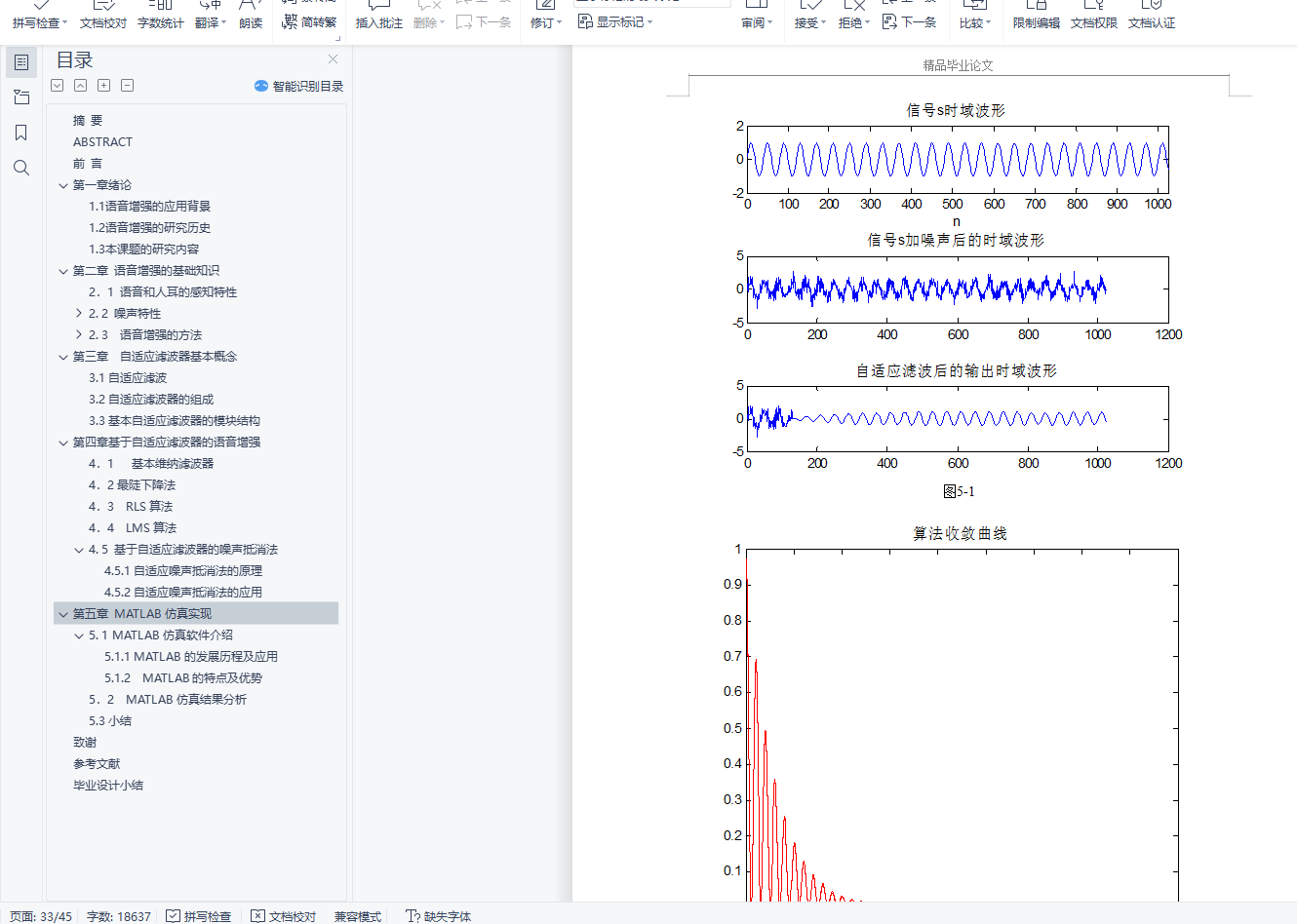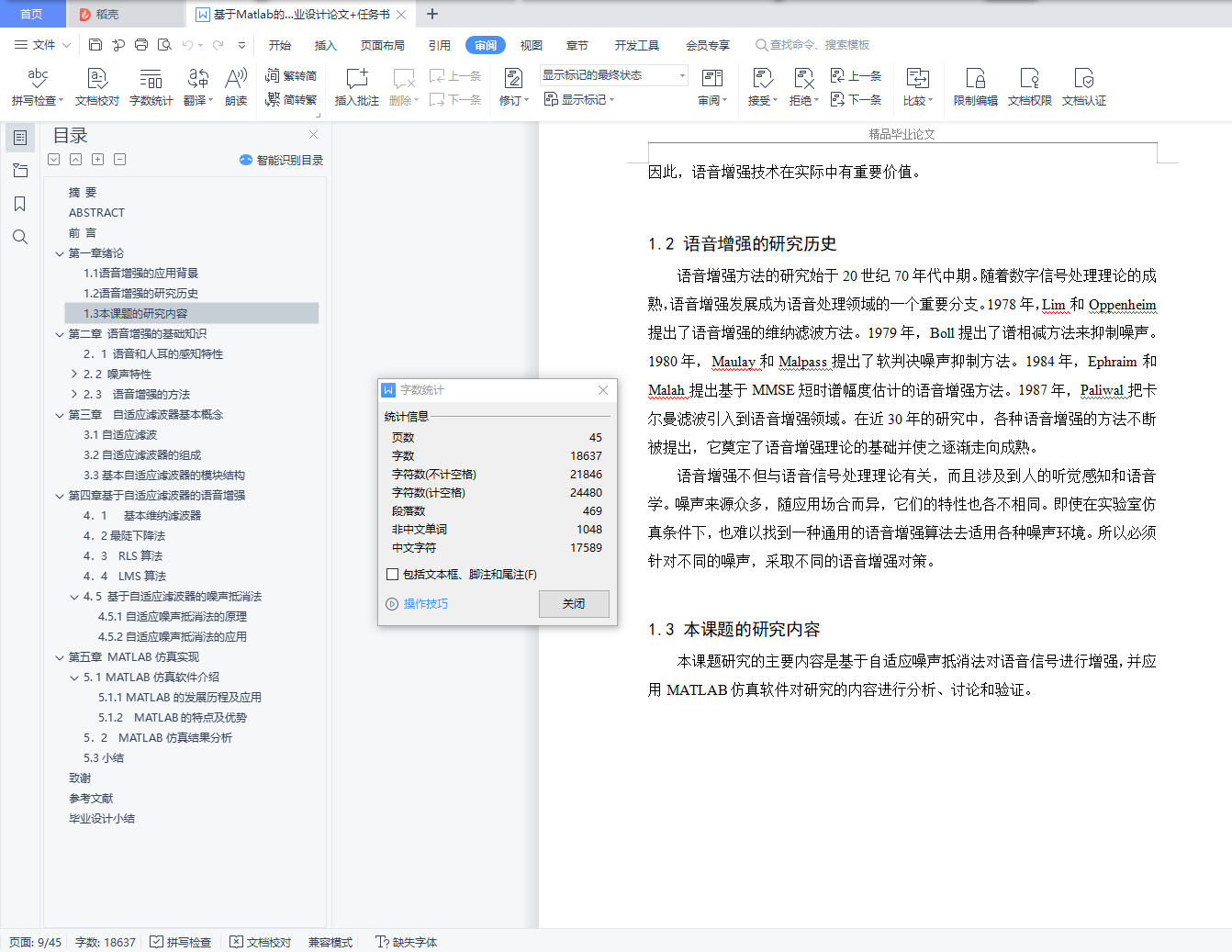摘 要
人们在语音通信过程中不可避免的会受到来自周围环境和传输媒介引入的噪声、通信设备内部电噪声、乃至其他讲话者的干扰。这些干扰使接收者收到的语音为受噪声污染的带噪语音信号。
语音增强的一个主要目的就是从带噪语音信号中提取尽可能纯净的原始语音。目前应用的语音增强方法大体上分为:谐波增强法、基于参数估计的语音再合成法和基于自适应的噪声抵消法。
自适应滤波器实际是一种能够自动调节本身参数的特殊维纳滤波器,在设计时不需要事先知道关于输入信号和噪声的统计特性,它能够在自己的工作过程中逐渐“了解”或估计出所需要的统计特性,并自动调整自己的参数,以达到最佳滤波效果。而基于自适应滤波器的自适应噪声抵消法对含噪语音的增强效果最好。因为这种方法比其他方法多用了一个参考噪声作为辅助输入,从而获得了比较全面的关于噪声的信息,从而能得到更好的降噪效果。
关键词:语音增强,噪声,自适应滤波器,自适应噪声抵消法
ABSTRACT
People in the voice communication process will be inevitable and the transmission medium from the surrounding environment, the introduction of noise, electrical noise within the communication equipment, as well as the interference of other speakers. These disturbances so that the recipient received voice is affected by noise pollution, noisy speech signal.
A major purpose of speech enhancement is from the noisy speech signal to extract the original voice pure as possible. Speech enhancement method currently in use generally divided into: harmonic enhancement method based on parameter estimation of speech re-synthesis and adaptive noise cancellation method.
Adaptive filter is actually a way to automatically adjust itself, the specific parameters of Wiener filter, the design does not require prior knowledge about the input signal and noise statistics, it can work in their own process of gradually "learn" or estimated the statistical properties of the required and automatically adjust their parameters to achieve the best filtering effect. The adaptive filter based on adaptive noise canceling speech enhancement of noisy best. Because this method more than the other methods most used an auxiliary input referred noise, to obtain more comprehensive information on the noise can get a better noise reduction.
KEY WORDS: speech enhancement, noise, adaptive filter, adaptive noise cancellation method

